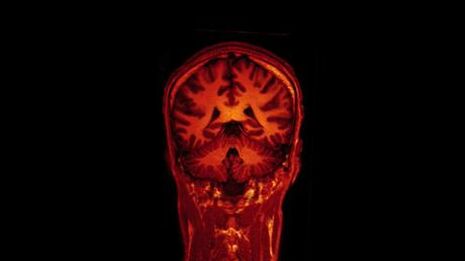This year has seen optimistic findings for those recovering from a stroke
Sofia Weiss presents her candidate for the most important breakthrough of the year

Injecting modified human adult stem cells directly into the brains of chronic stroke patients proves not only safe, but also effective in restoring motor function. This could bring a revolution in neurological treatment.
Their study involved 18 stroke patients who had all passed the critical six-month mark after which further improvements are a rarity, since the brain circuitry affected is thought to be irreparable.
The researchers sought to challenge this conventional medical wisdom by subjecting the patients to a simple but bold treatment: an injection into the brain through a small hole drilled into the skull. The next day, they all went home.
While more than three-quarters suffered transient headaches afterwards – likely owing to the surgical procedure itself – no meaningful adverse effects attributable to the stem cells themselves, or the procedure used to administer them, were observed. In fact, at the one-, six- and 12-month marks, a formerly wheelchair-bound patient was walking again, with several others describing that their limbs had somehow awakened post-treatment. Overall, substantial improvements were seen in all of the patients’ scores on a number of widely-accepted metrics of stroke recovery, independent of their age or the condition’s severity at the beginning of the trial.
Although the research should not be oversold, since it was only a small clinical trial designed primarily to gauge the safety of such a procedure and not its effectiveness, its implications should rightly inspire optimism: it contradicts the long-held central tenet that brain damage is irreversible and that patients are confined to live in its jail cell in perpetuity.
There is the potential, even, to jump-start the brain’s damaged circuits. This is where study will continue in 2017. Indeed, the same researchers have since launched a larger, randomised double-blinded trial using the procedure.
One stroke occurs approximately every three and a half minutes in the UK, and a further array of neurological disorders produce similar losses of motor control, with its associated profound negative effects on a person’s existence. It is in this context that we wait on tenterhooks for further results
 Features / Pulling pints and making flat whites: the unspoken relationship between hospitality staff and Cambridge students17 June 2025
Features / Pulling pints and making flat whites: the unspoken relationship between hospitality staff and Cambridge students17 June 2025 News / Pembroke alumnus appointed as new head of MI617 June 2025
News / Pembroke alumnus appointed as new head of MI617 June 2025 News / SU overspends for second year in a row18 June 2025
News / SU overspends for second year in a row18 June 2025 News / 2025: The death of the May Ball? 13 June 2025
News / 2025: The death of the May Ball? 13 June 2025 News / Academics seek to restrict University’s use of injunctions 16 June 2025
News / Academics seek to restrict University’s use of injunctions 16 June 2025



